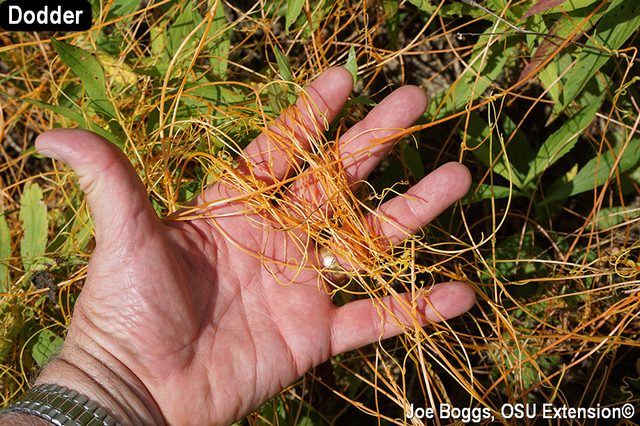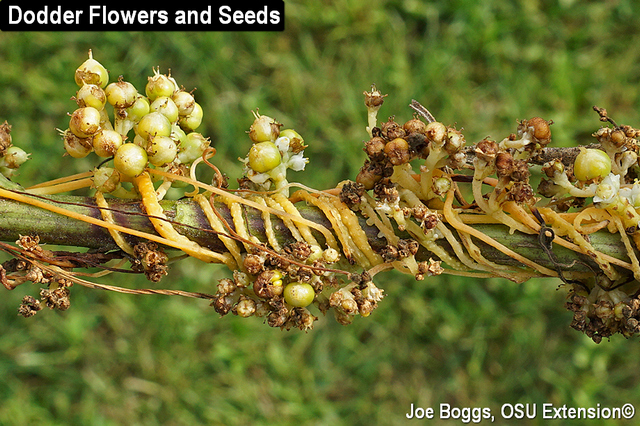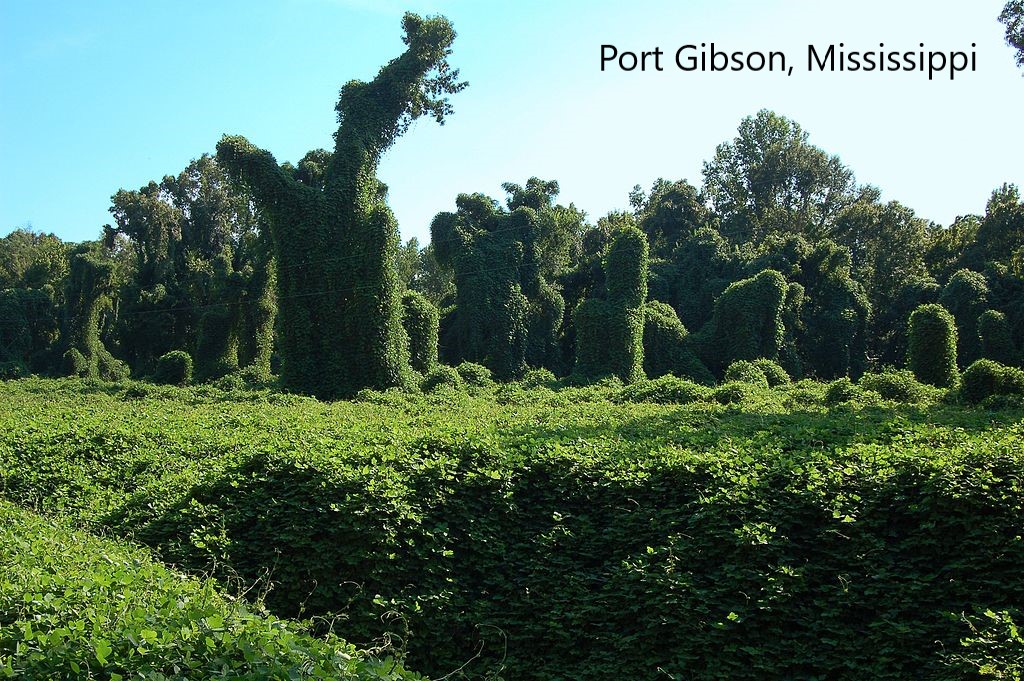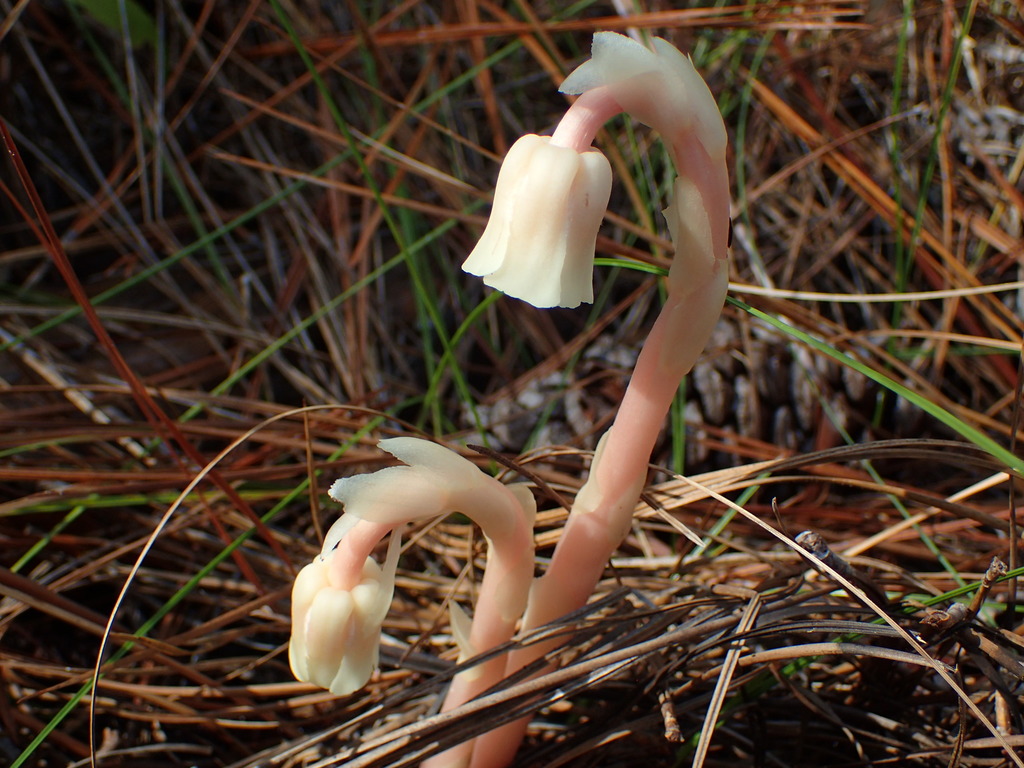Ghost Pipes, Kudzu, and Dodder, OH MY!
3 Real Plants that Rival Halloween Monsters
by Carrie Brown, Engineering Technician
From Vampires and Ghosts to Werewolves and Zombies, science fiction and horror writers have created many startling characters with terrifying, yet memorable, traits.
With Halloween quickly approaching, let’s take a look at three science fiction inspirations…that are anything but fiction.
Dodder

With nicknames that include “Devil’s guts,” “vampire plant,” and “witch’s hair,” few plants hold the spook-factor that dodder does.
Belonging to the morning glory family, 13 species of dodder can be found in Ohio. Common Dodder and Field Dodder are the two most common species that are native to our state, and both have been reported in Fairfield County.
There are many characteristics that make this plant peculiar, the first of which is that most dodder species lack something we often think of as fundamental in the plant world: leaves.
As a result, dodder produces very little chlorophyll, thus doesn’t quite have the “umph” to readily photosynthesize.
Following germination a dodder plant, depending upon its feeble capacity to make food, only has the ability to power its solitary existence for up to 15 days….unless it finds a host.

As illustrated in this video, a young dodder plant will mosey around until it is able to sniff out a suitable host. As an obligate parasite, it has no other choice, and it turns out it’s not too picky.
From goldenrod, to Callery pear, to soybeans, dodder has a wide range of tastes.
Once a host is detected, dodder will begin wrapping itself around the plant.
Soon after, it develops small piercing structures called haustoria that penetrate the host plant, allowing the dodder to imbibe water, nutrients, and carbohydrates from its host.
It turns out “vampire plant” is quite fitting.

Since dodder now has a free source of goodies, it no longer has the need for roots. Once severed from the Earth, dodder is truly one with its host.
Because of this fraternization, it is impossible at this point to terminate the dodder without also killing the host plant. As a result, dodder causes millions of dollars in crop losses worldwide every year.
Learn more about this fascinating, life-sucking creature in Buckeye Yard & Garden OnLine’s article “Weaving the Dodder’s Tale“.

Ghost Pipes
Perhaps you’ve noticed this “ghostly” plant species while walking in densely wooded areas.
Often confused for a fungus, Ghost Pipes, also known as Indian Pipes, is indeed a type of flora.
As you may have guessed by its pale complexion, this perennial wildflower lacks chlorophyll. This is the green pigment most plants use for photosynthesis, the process in which plants harness the sun’s energy to produce food.
Instead, this species elected a different and somewhat unconventional evolutionary path.

Because it is not reliant on sunlight, the Ghost Pipe has free range of shaded, thickly forested areas. And since it is not producing its own food, it must rely on outside sources. This is where things get interesting.
Whereas many parasites feed directly on other plants, such as dodders discussed above, Ghost Pipe receives its energy from….let’s say a food delivery service.

Deep under the forest floor there’s a constant give-and-take proceeding between tree roots and a tangle of stringy underground fungus called Mycorrhizal Fungi.
Like an intricate game of telephone, tree roots and fungi are relentlessly exchanging goods: the tree roots provide fungi with carbohydrates that the tree makes through photosynthesis, while the fungi swaps minerals & nutrients that are out of the tree’s reach.
Ghost pipes take advantage of this bartering, stealing the newly gifted carbohydrates from the fungi, in turn stealing from the tree…and offering nothing in exchange.
The term for this shifty embezzlement is scary in its own right: mycoheterotrophic.
Kudzu
With the ability to grow up to one foot per day, this green monster can quickly conquer natural areas and turn them into a green monoculture. There’s a reason this plant is known as the vine that ate the South…

Kudzu is native to East Asia, primarily Korea, Japan, and China. It was first introduced at the 1876 Philadelphia Centennial Exposition as an ornamental plant and was widely distributed in southeastern U.S. for forage and erosion control purposes until its wicked nature was fully comprehended.

There are more than a few adaptations that give this green beast the ability to dominate both inside and outside of its native range.
Kudzu is now present in Ohio and appears on Ohio’s prohibited noxious weed list. Although our shorter growing season and cooler winters help to suppress this monster, it still poses many threats to our woodlands and should be reported.
Management techniques do exist, including manual removal, chemical application, and animal grazing & browsing.




